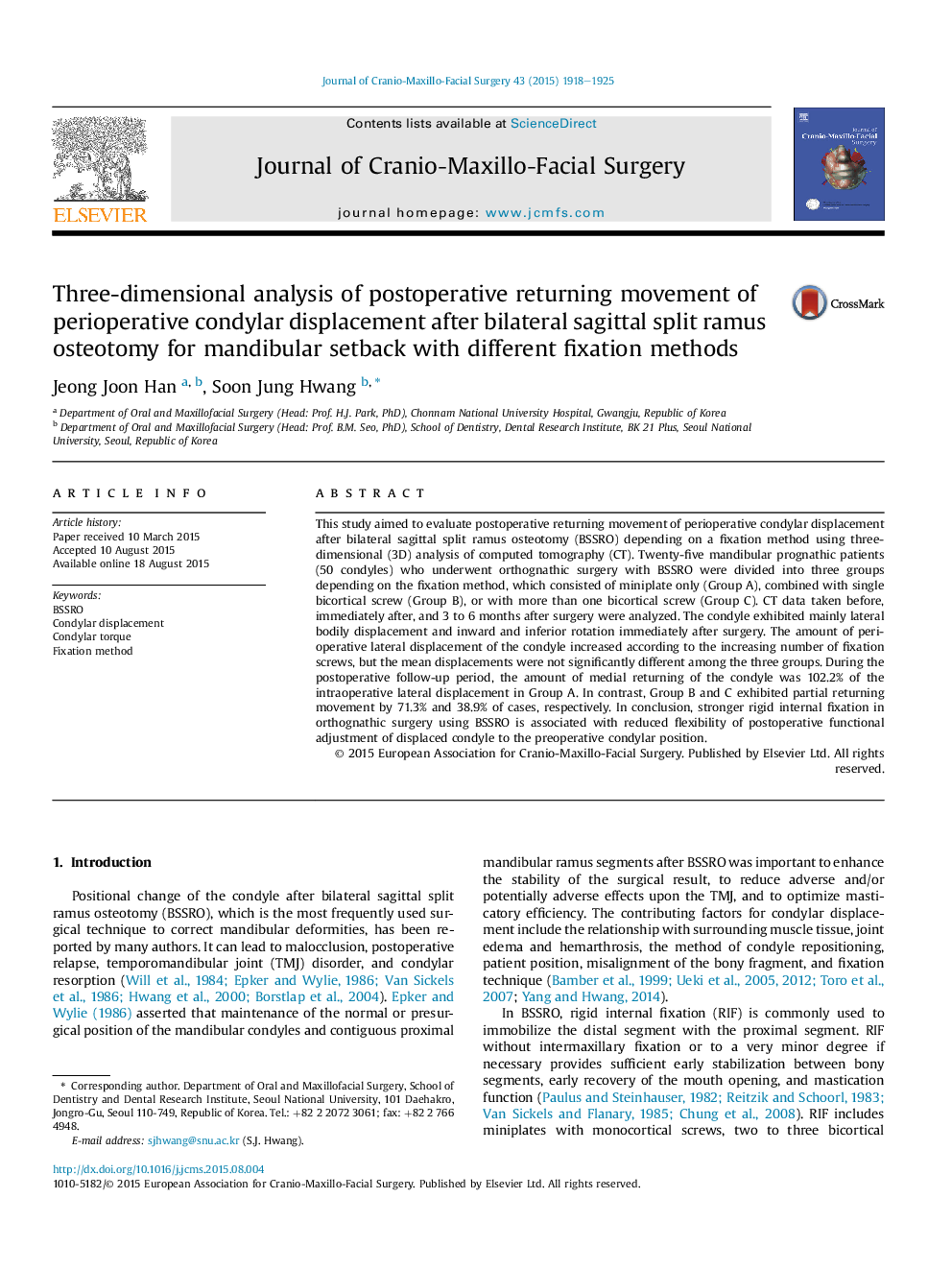| Article ID | Journal | Published Year | Pages | File Type |
|---|---|---|---|---|
| 3143065 | Journal of Cranio-Maxillofacial Surgery | 2015 | 8 Pages |
This study aimed to evaluate postoperative returning movement of perioperative condylar displacement after bilateral sagittal split ramus osteotomy (BSSRO) depending on a fixation method using three-dimensional (3D) analysis of computed tomography (CT). Twenty-five mandibular prognathic patients (50 condyles) who underwent orthognathic surgery with BSSRO were divided into three groups depending on the fixation method, which consisted of miniplate only (Group A), combined with single bicortical screw (Group B), or with more than one bicortical screw (Group C). CT data taken before, immediately after, and 3 to 6 months after surgery were analyzed. The condyle exhibited mainly lateral bodily displacement and inward and inferior rotation immediately after surgery. The amount of perioperative lateral displacement of the condyle increased according to the increasing number of fixation screws, but the mean displacements were not significantly different among the three groups. During the postoperative follow-up period, the amount of medial returning of the condyle was 102.2% of the intraoperative lateral displacement in Group A. In contrast, Group B and C exhibited partial returning movement by 71.3% and 38.9% of cases, respectively. In conclusion, stronger rigid internal fixation in orthognathic surgery using BSSRO is associated with reduced flexibility of postoperative functional adjustment of displaced condyle to the preoperative condylar position.
